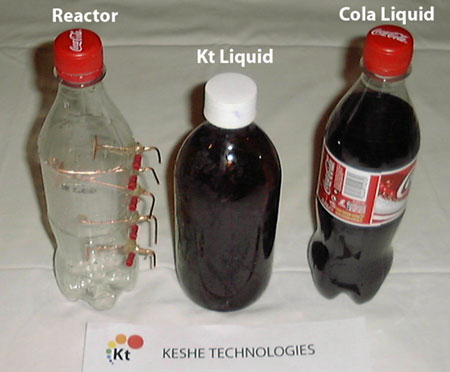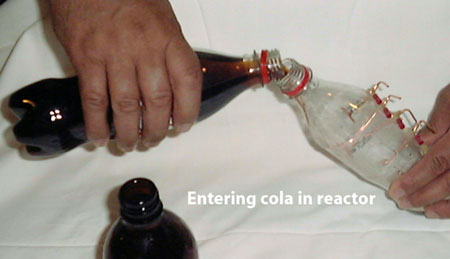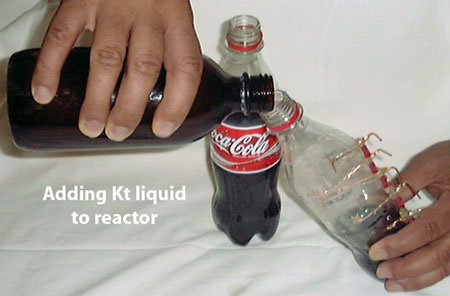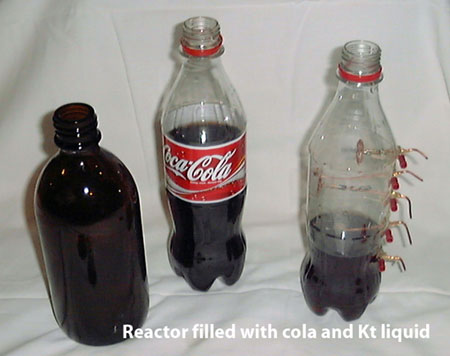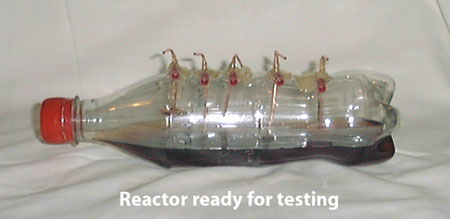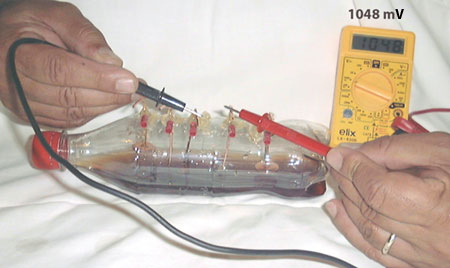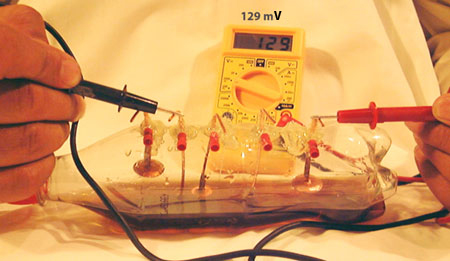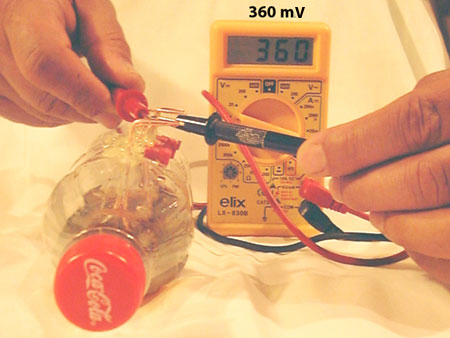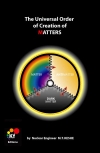Dynamic reactors
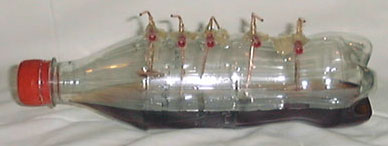 cola bottle plasma reactor with electrodes cola bottle plasma reactor with electrodesSeveral static and dynamic working prototypes confirm the new insights related to the PME's (Plasmatic Magnetic Energy) and the Keshe concept of SEPMAF's (Specific Entangled Plasmatic Magnetic Fields). The design and technology of our reactor systems has been developed in accordance with the same principles and methods that are seen in the physics of the universe, and similar effects have been achieved. One of our simplest static plasma reactors is the cola bottle. This is equipped with a number of electrodes, from two to five. In this cola bottle reactor we achieve several outputs of voltage and current, we create atomic hydrogen and simultaneously we obtain deposits of atomic carbon on the electrodes. The working of these static reactors is not based on chemical interaction, as with acids, and the process is completely different from what happens in existing batteries. For example current is collected even from electrodes that are not submerged in the liquid, thus it is being collected from pure plasma. What’s more, the reactor recharges itself automatically while other terminals are generating voltage.
The main goal in performing these tests is to prove that the carbon from the gases inside the liquid can be collected and deposited on the electrodes. This demonstrates that the same principle can be utilized to separate carbon from the exhaust gases of cars and factories.
CARBON AND ENERGY TESTS
Other results have been found with other combinations of electrodes. Similar voltages and current are also attained with both electrodes only in the plasma area (upper part), thus not submerged in the liquid.
All photos were taken during the same test. After further processing the electrodes become black from the deposits of sp2 and sp3. Sp2 carbon (called 'graphene') is a ballistic (super-super) conductive material that can be used in micro- and nano-electronics. Sp3's are diamond-like structures. This all happens in a simple cola bottle, and not in a complex system with lasers and high pressure or vacuum!
|
||||||||||||||||||


